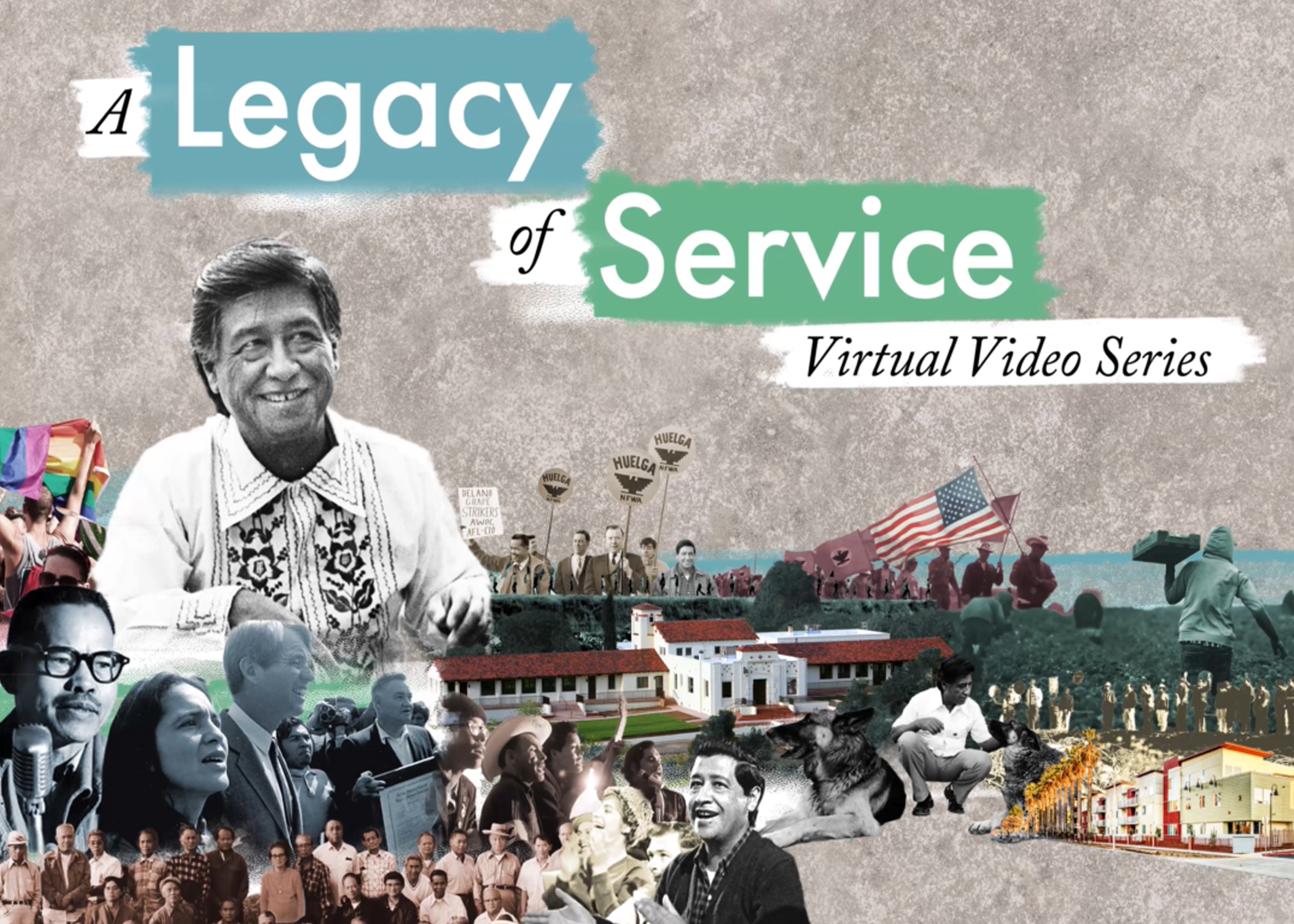Join the Cesar Chavez Foundation for “A Legacy of Service,” a virtual series bringing together experts, thought leaders, and activists to learn about the values Cesar Chavez epitomized.
Episode 3 premiering March 25, 2022: Executive Vice President of Housing and Economic Development Fund Alfredo Izmajtovich in conversation with Chief Operating Officer Manuel H. Bernal
Cesar Chavez said migrant farm workers were among the original homeless. He and his family endured miserable farm labor camps and often slept under bridges or trees by roadsides while following California’s migrant trails in the late 1930s and early ‘40s. Cesar made affordable housing for the poor a mission of the National Farm Workers Service Center Inc., now known as the Cesar Chavez Foundation. Chavez Foundation Chief Operations Officer Manuel Bernal and Executive Vice President of Housing and Economic Development (HED) Alfredo Izmajtovich discuss the history of the HED Fund and the long-term effort to build wealth and lasting change by directing economic investment into underserved communities, fostering new initiatives that encourage entrepreneurship, educational development, and community service.
Episode 2: Executive Vice President of Education Dr. Celia Garcia Alvarado in conversation with Riverside County Deputy Superintendent of Schools Dr. Edwin Gomez
Cesar Chavez believed that the needs of the people went beyond their workday and understood that farmworkers lacked access to high-quality education for their children. Today, the Cesar Chavez Foundation’s Education Fund is dedicated to building a just society by educating the hearts and minds of children through culturally responsive, diverse products and services in under-resourced communities. Tune in Monday, September 13, to learn more about the work of the Education Fund and a new program in partnership with the Riverside County Office of Education.
Premiered March 31, 2021: Paul Chavez In Conversation with Teresa Romero
Cesar Chavez Foundation President Paul Chavez and UFW President Teresa Romero discuss Cesar Chavez’s bold vision for a strong farmworkers’ union as well as services that would support that union by building communities up beyond the workplace. Learn about Cesar’s ambitious vision, and how half a century later, the lasting and ongoing effects of his work continue to transcend even his original aim.

